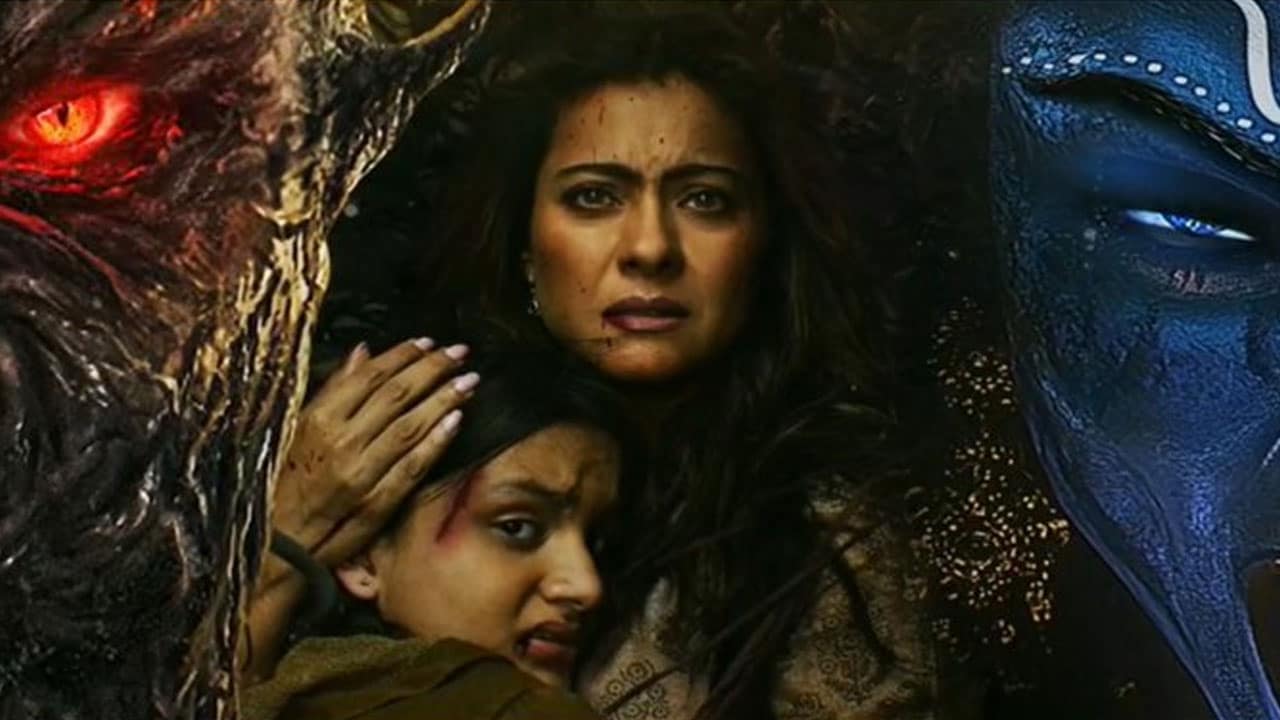
when Horror Yearbook – Maa (2025) opens with the haunting silence of a rural Indian village and quickly descends into a gripping tale of grief and spiritual terror. The film stars Kajol in a career-defining performance as a widow who begins to experience inexplicable and terrifying phenomena after the death of her husband. These manifestations lead her to confront not only personal loss but also long-buried village legends tied to the goddess Kali. Directed by Vishal Furia, the film debuted in Indian cinemas on June 27, 2025, receiving widespread acclaim for its strong performances and emotionally rich storyline. Audiences have praised the balance between intimate family drama and grand supernatural elements. Rather than relying on jump scares, the film builds tension through atmosphere, sound, and symbolic imagery. Plans for a Netflix streaming release have already generated significant anticipation, especially among fans of Indian horror and mythology.
In Maa, Kajol portrays a mother navigating trauma and spiritual crisis with raw intensity. Her portrayal of a woman grappling with grief while facing supernatural events connects deeply with viewers. The character does not accept the bizarre occurrences passively but actively seeks out answers within village myths. Through her, the audience explores how traditional belief systems and feminine strength converge. Kajol’s commitment to the role brings vulnerability and power to a character who could have easily become a genre archetype. Her scenes with villagers, local priests, and her child reveal the multifaceted emotional core of the story. Critics have noted that her performance elevates the narrative from standard horror to a mythic exploration of motherhood and justice. The emotional stakes feel real, not exaggerated, which strengthens the horror aspects. Her journey through the layers of myth and memory ultimately defines the film’s identity. The performance remains central to why Maa resonates with such intensity.
“Read about: The Grafton Ghost Hound: Haunting Howls Along the Rails”
Vishal Furia crafts Maa with a deliberate pace and a strong sense of place. The rural setting, with its decaying shrines, dense forests, and shadowed alleys, becomes a character in itself. Instead of flashy effects, the director relies on natural lighting and practical designs to create unease. The decision to shoot on location enhances authenticity and tension. Traditional Indian rituals and folklore are woven seamlessly into the narrative, adding cultural depth. Furia avoids over-explaining the mythology and instead lets it unfold through character interaction and visual storytelling. Several scenes are lit with torches and oil lamps, creating a flickering sense of dread. The village feels isolated and forgotten, amplifying the protagonist’s vulnerability. Audiences have responded to the immersive atmosphere, which does not let go once the tension begins. Critics agree that Furia’s restraint and confidence in cultural texture make Maa stand out in the horror genre.
The film draws heavily from Indian mythology, particularly the fierce and complex image of goddess Kali. Instead of using the goddess as a mere symbol, the narrative integrates her as a force of justice and transformation. Kali’s presence is felt in dreams, rituals, and signs that the protagonist must decipher. The villagers both revere and fear her, reflecting historical ambivalence towards divine feminine power. Kajol’s character is led through ancient temples and forbidden spaces that suggest forgotten truths. This mythological framing offers layers to the plot beyond simple scares. As she moves deeper into the mystery, her personal grief mirrors Kali’s destructive and regenerative powers. The film does not reduce myth to metaphor but treats it as an active reality. Critics have highlighted how this spiritual dimension distinguishes Maa from typical horror films. The goddess does not merely appear; she challenges, transforms, and empowers.
“Read more: E coli Outbreak in Northern France Claims Life of 12-Year-Old Girl”
Maa opened strong at the box office, collecting approximately ₹4.65 crore on its first day. This success signals a growing appetite for culturally rooted horror in India. Audiences have praised its emotional storytelling, strong female lead, and mythological context. The film avoids clichés of Western horror and instead embraces Indian narrative forms. As a sequel to Shaitaan, Maa expands the thematic universe while standing firmly on its own. Conversations around the film suggest increased interest in Indian folklore as a source of cinematic horror. International streaming plans, particularly the expected Netflix release, will likely bring it to a wider audience. Experts have noted that Maa could become a benchmark for future Indian horror projects. It blends performance, direction, and cultural authenticity in ways that elevate the genre. With the right promotion, its influence may extend far beyond box office numbers.